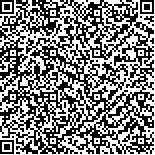下载中心
优秀审稿专家
优秀论文
相关链接
摘要

研究了机载GNSS-R遥感海面风场的仿真原理和技术,以KA-GO相关功率模型为基础,分析海浪谱,海面坡度和风速风向的关系,并针对不同风速、风向、接收机高度和飞行速度海面散射信号相关功率开展了数值仿真分析研究,并建立了仿真软件。仿真研究结果表明,以上因素对海面反射信号的相关功率波形的峰值和后沿斜率均有影响。本文的仿真结论为GNSS-R海面风场反演打下了理论基础,建立的仿真软件为GNSS-R海面风场反演提供研究平台。
We focuse on simulation principles and techniques of GNSS-R in sea surface wind field (SSWF) retrieval based on airborne remote sensing, and analyze the relationship among ocean wave spectrum, sea surface slope, wind speed and direction. We not only carry out a numerical simulation on the condition of various wind speeds and directions, receiver altitudes, and flight speeds, but also have completed a corresponding simulation software. The simulation results indicate that all the parameters above can affect the peak value and the trailing slope of the relative power waveform of the reflected signals from sea surface. Simulation study of this paper establishes a theoretical basis for the SSWF retrieval using GNSS-R.

